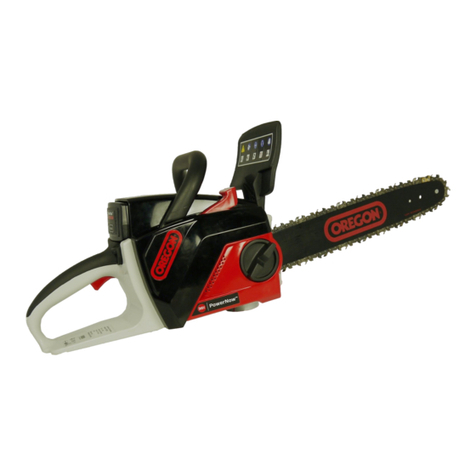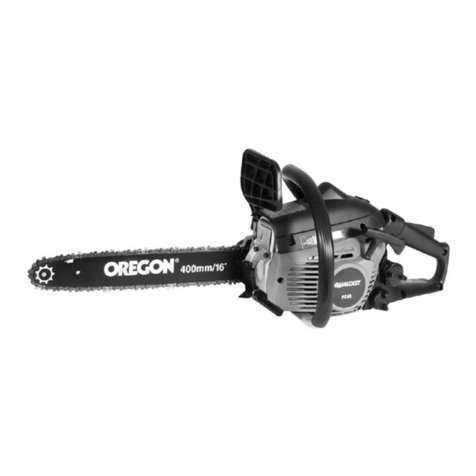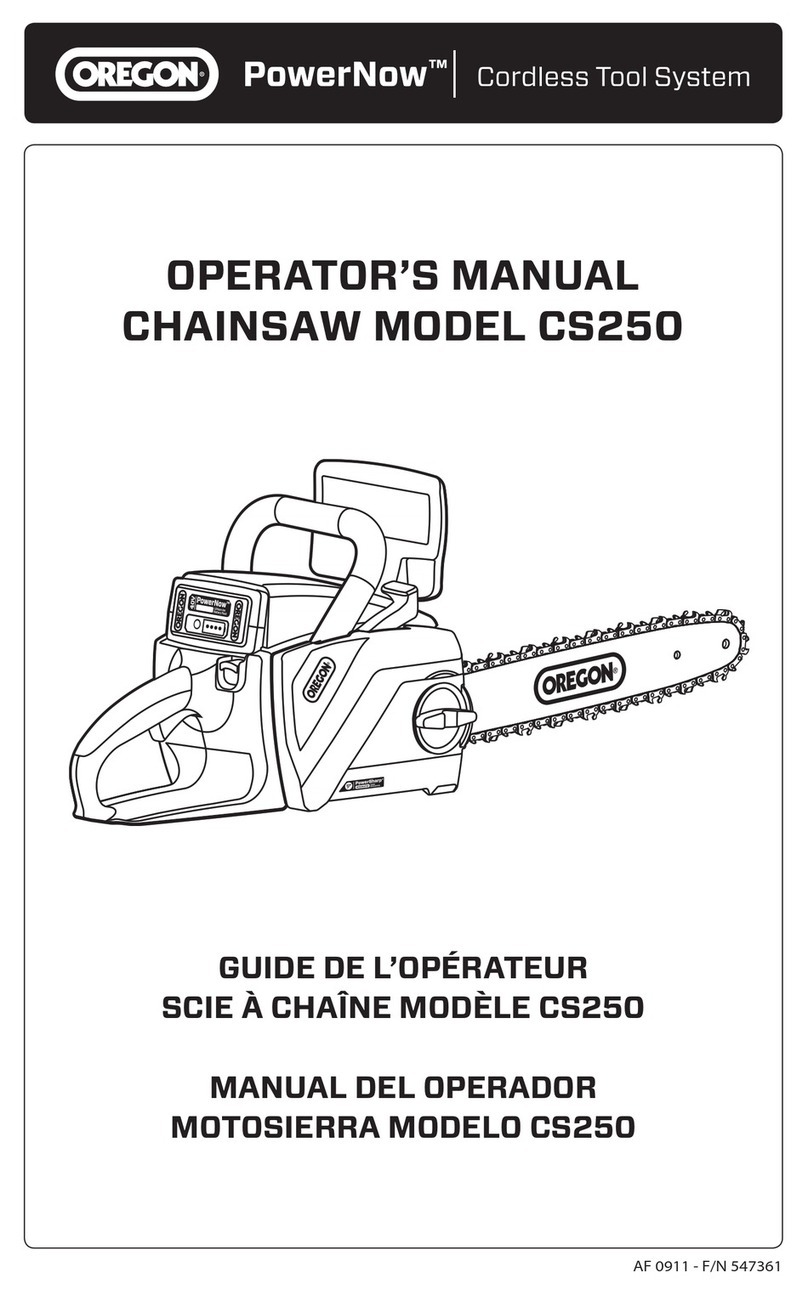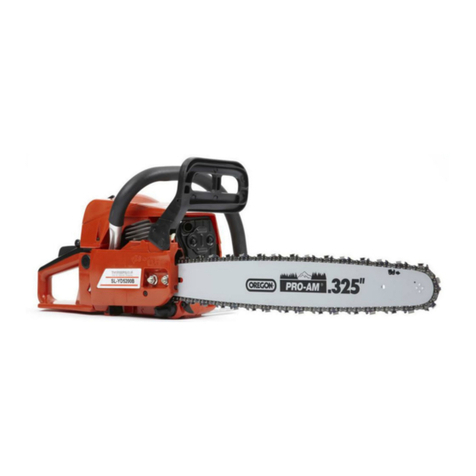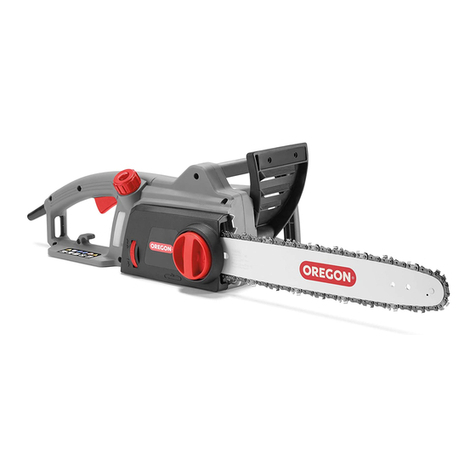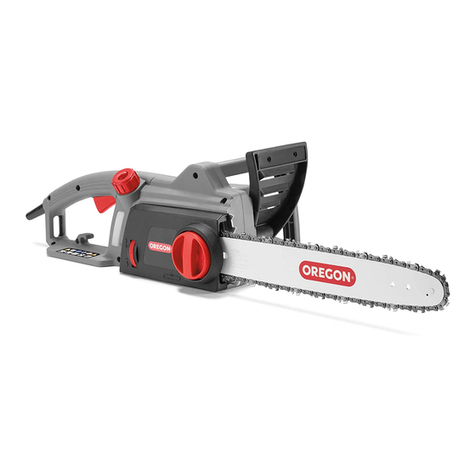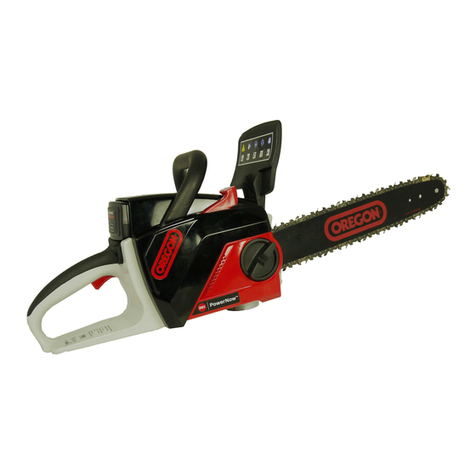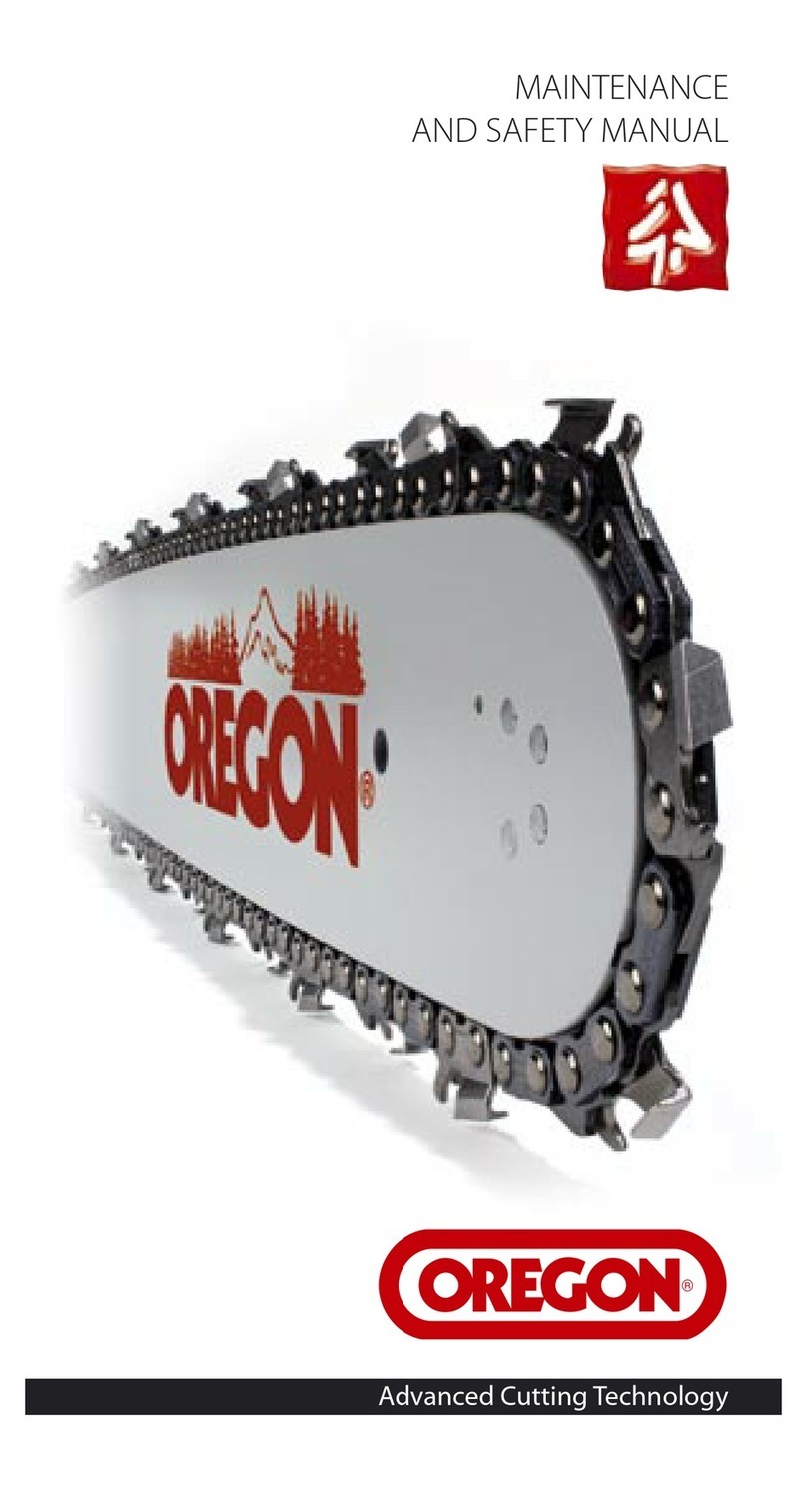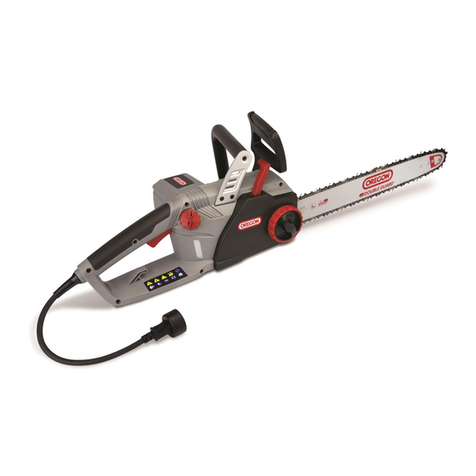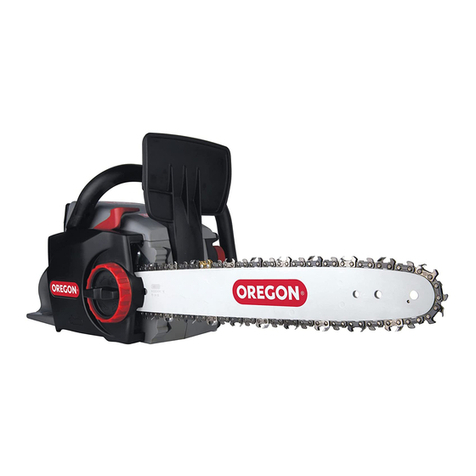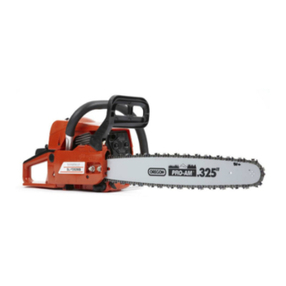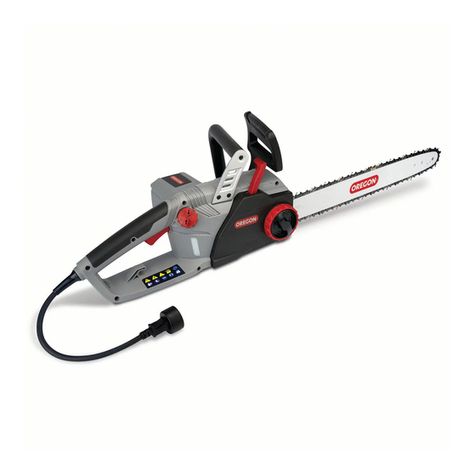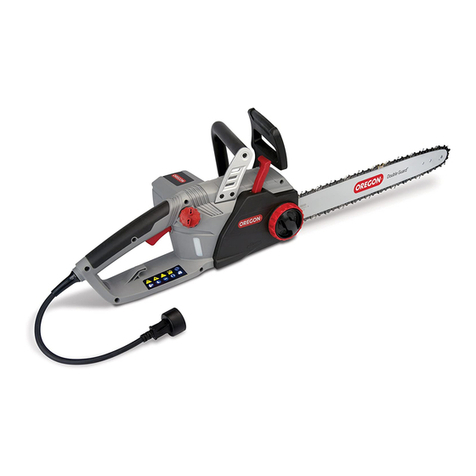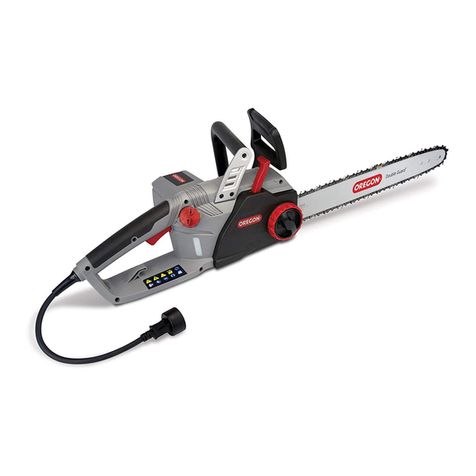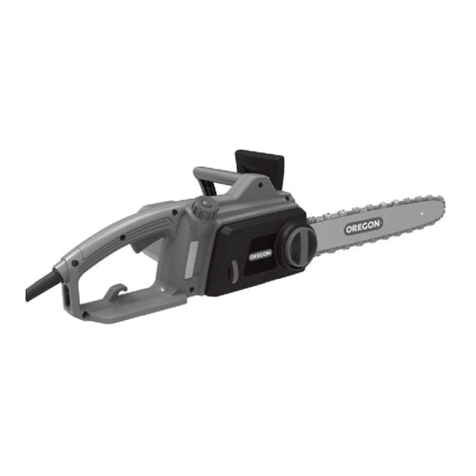
680ES OPERATOR MANUAL 680ES OPERATOR MANUAL
12 13
© 2022 OREGON®, Oregon Tool Inc. Specifications are subject to change without notice. REV09062022 F/N 577451 © 2022 OREGON®, Oregon Tool Inc. Specifications are subject to change without notice. REV09062022 F/N 577451
ENGLISH
Safety Rules
HANDLING FUEL SAFELY
Check saw for fuel leaks before starting.
Check regularly for leaks from the fuel cap and fuel lines and do not start saw if any leaks are found.
Avoid spilling fuel on yourself or on the saw.
Use only approved containers to transport and store fuel. If fuel is spilled on the saw, wipe up the spillage and
allow the rest to evaporate. If fuel is spilled on yourself or your clothes, immediately remove contaminated
clothing and wash any part of your body that has contacted fuel with soap and warm water.
Fuel vapors are highly flammable.
Turn o the saw, assure that the multi-function lever is set in the “STOP” position, and allow the engine to cool
a few minutes before fueling. Do not smoke or refuel the saw in close proximity to any ignition sources. Move
the saw at least 3 m (10 ft)from the fueling area before restarting it.
WARNING
CAUTION
Safety Rules
WORK AREA SAFETY
Keep children and bystanders away from work area.
Set up a well-marked safety zone with a roped boundary and clear signs to keep bystanders at least 6 m (20 ft)
away.
Remove or control slurry to prevent slippery conditions while cuing.
This saw uses water and can cause slippery surfaces due to the slurry produced and/or freezing temperatures.
Drugs or alcohol can impair vision, dexterity, and judgment.
Do not operate the saw when tired or under the influence of any substance.
Breathing exhaust gases can cause asphyxiation and carbon monoxide poisoning in high concentrations.
Use the saw only in a well-ventilated area.
DANGER
WARNING
CAUTION
Following are the basic instructions to assure work area safety.
PERSONAL SAFETY
Always wear protective clothing.
At a minimum always wear eye protection and/or face shield, hearing protection, long sleeve shirt, long pants,
closed toe shoes with non-slip soles, and gloves. In many work situations, a hard hat and steel toed shoes may
also be required. Avoid loose fiing clothing.
This saw can generate hazardous dust and vapors.
Determine the nature of the material you are going to cut before proceeding with the job. Be especially aware
of cuing materials containing silica and asbestos as inhaling dust can result in respiratory disease. Be sure to use
appropriate respiratory protection designed to filter out microscopic particles. Be sure to use adequate water
pressure.
Over-exposure to vibration can lead to circulatory and/or nerve damage to the extremities, especially in cold
temperatures (Reynaud’s Disease).
If you experience tingling, numbness, pain or changes in skin color, particularly in your fingers, hands or wrists,
stop using the saw immediately. If the problem persists, seek medical aention.
Following are the basic instructions to assure personal safety.
WARNING
Long-term exposure to noise can result in permanent hearing impairment.
Always wear approved hearing protection.
This machine produces an electromagnetic field during operation.
This field may under some circumstances interfere with active or passive medical implants. To reduce the risk of
serious or fatal injury, we recommend persons with medical implants consult their physician and the medical
implant manufacturer before operating this machine.

